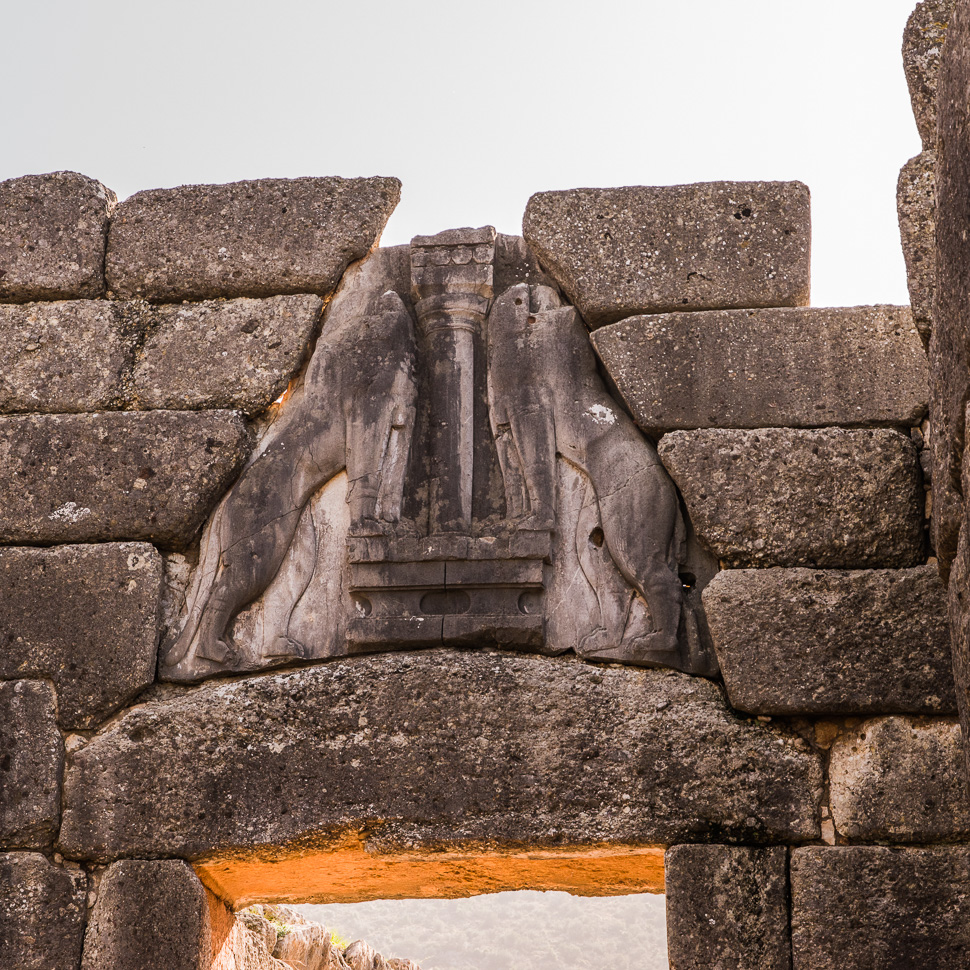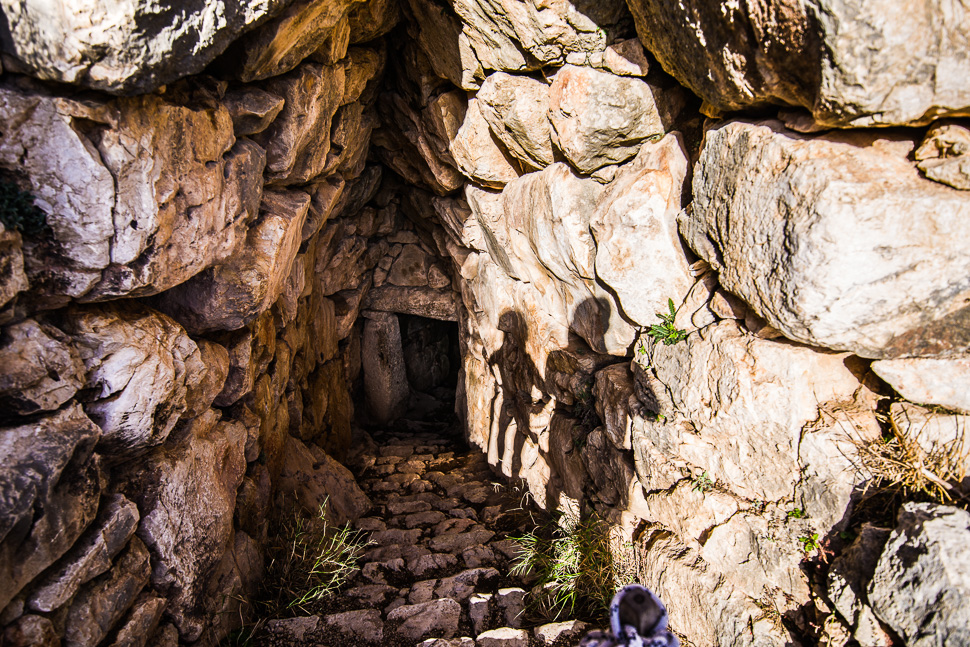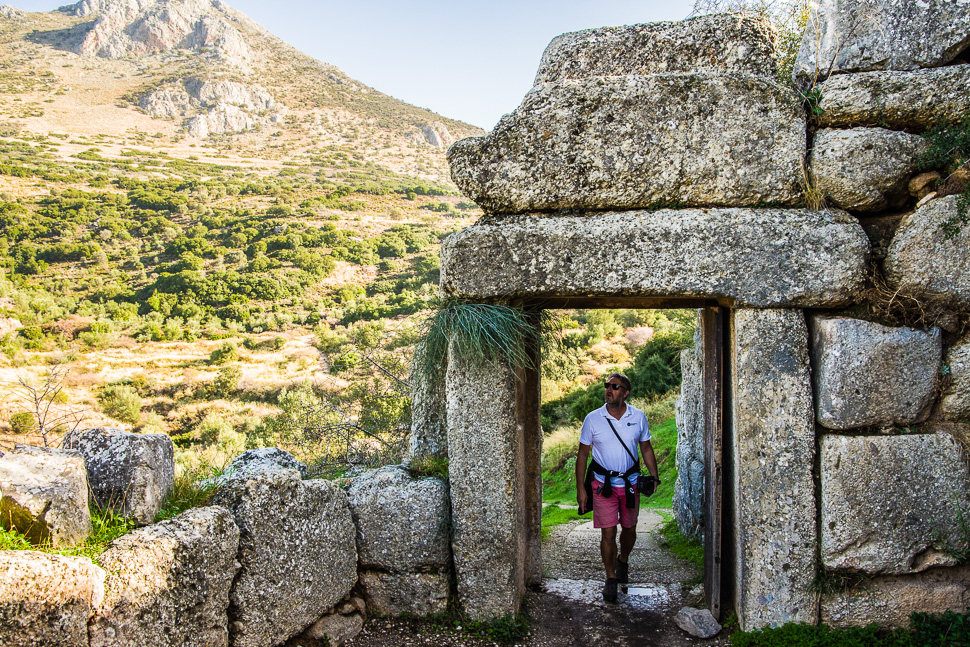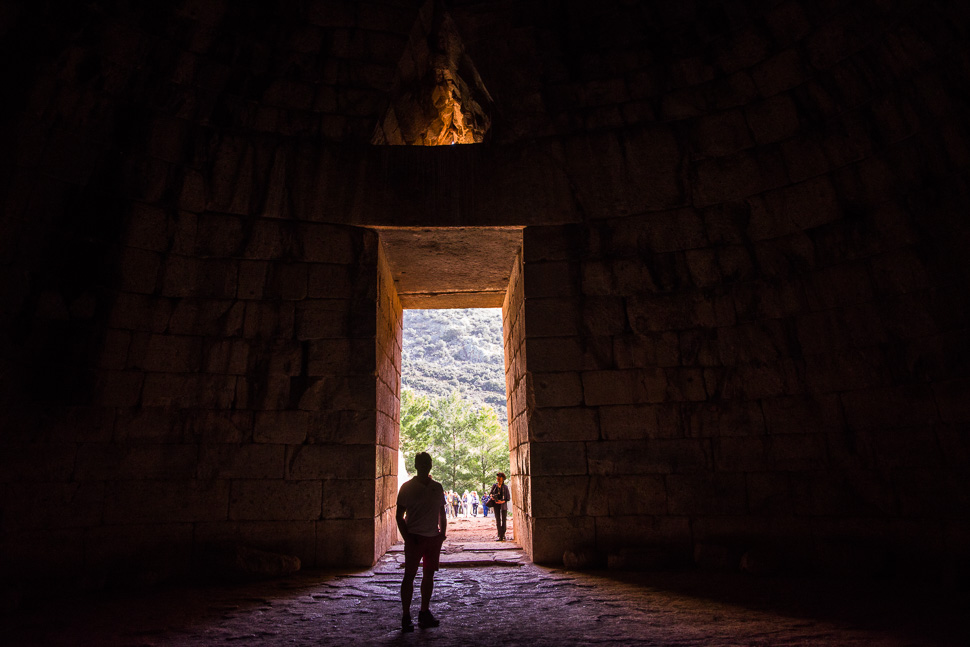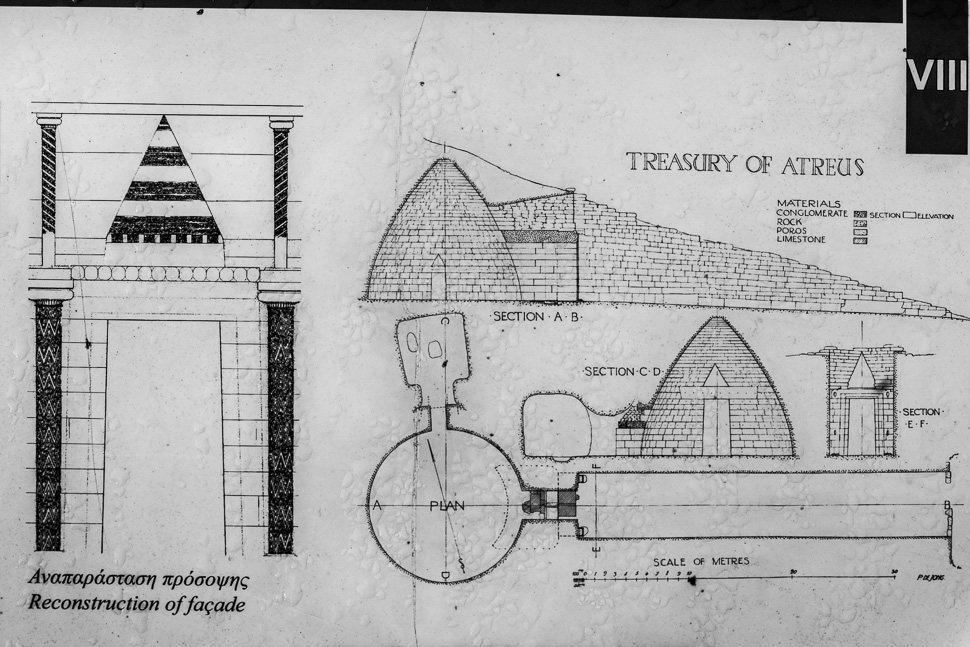Today Mycenae was on our program – the centre of Greek civilisation in the 2nd millennium BC! I was looking forward to visit the famous Lion Gate and the Cyclopean Walls of this incredibly old town.
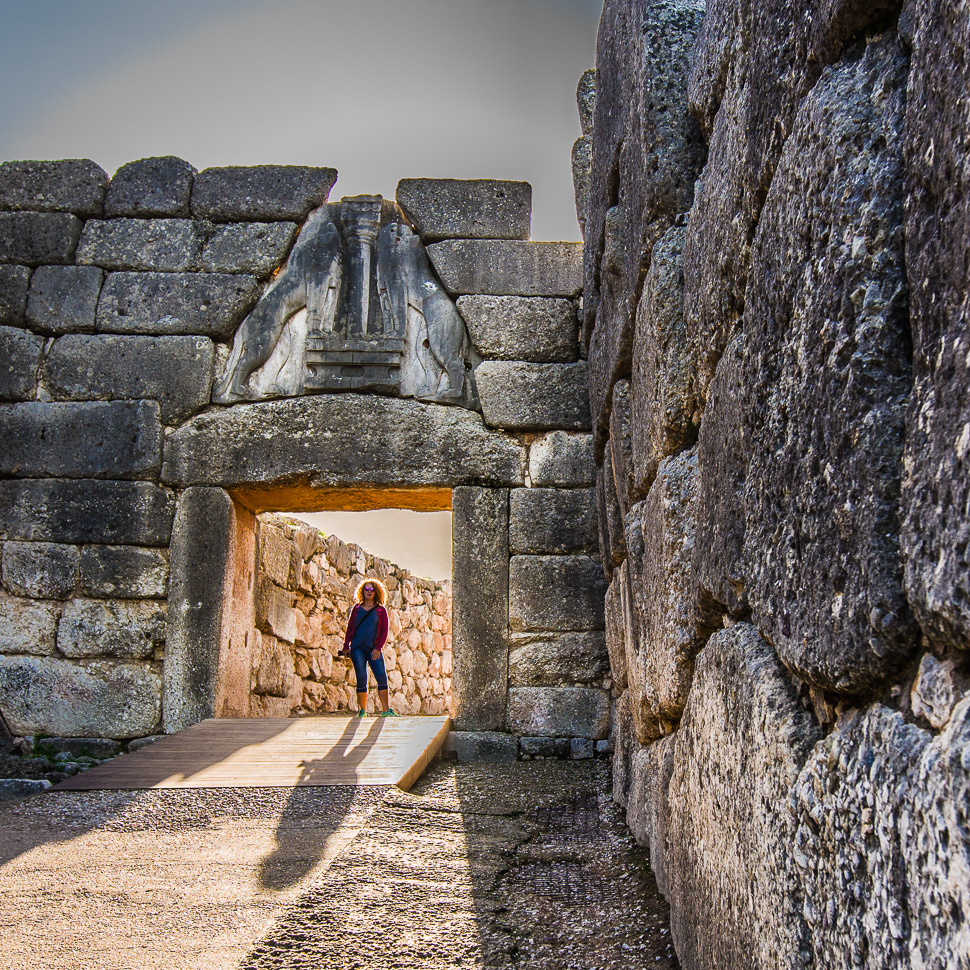 |
| The Lion Gate at Mycenae, the only known monumental sculpture of Bronze Age Greece |
In the 2nd millennium BC Mycenae was one of the major centres of Greek civilisation, a military stronghold which dominated much of southern Greece, Crete, the Cyclades and parts of southwest Anatolia. The period of Greek history from about 1600 BC to 1100 BC is called Mycenaean in reference to Mycenae. At its peak in 1350 BC, the citadel and lower town had a population of 30,000 and an area of 32 hectares. The city remained continuously inhabited until the 5th century BC.
The lintel of the Lion Gate consists of a monolith weighing about twelve tons. Above it is the triangle with the lion relief. The heads of the lions are said to have consisted of bronze or steatite, but were not found in the excavations.
The Lion Gate was the main entrance of the Bronze Age citadel of Mycenae. It was erected around 1250 BC and is the sole surviving monumental piece of Mycenaean sculpture, as well as the oldest monumental sculpture in Europe. It is also the only relief image which was described in the literature of classical antiquity, such that it was well known prior to modern archaeology. During the Roman period in Greece, its ruins had already become a tourist attraction. The ancient travel writer Pausanias for example had visited the site and described the fortifications and the Lion Gate.
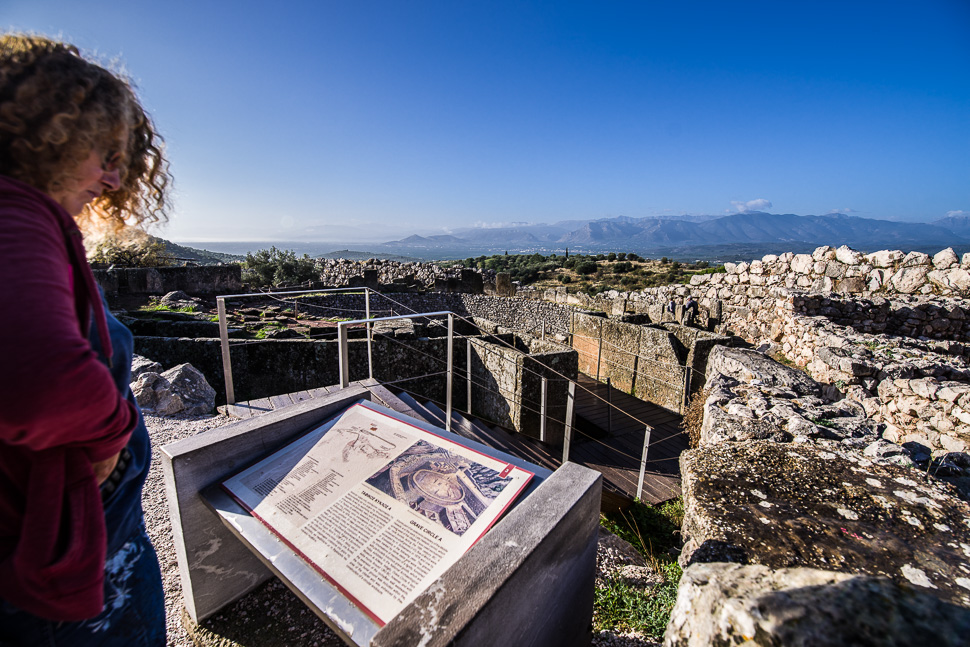 |
| Looking at Grave Circle A |
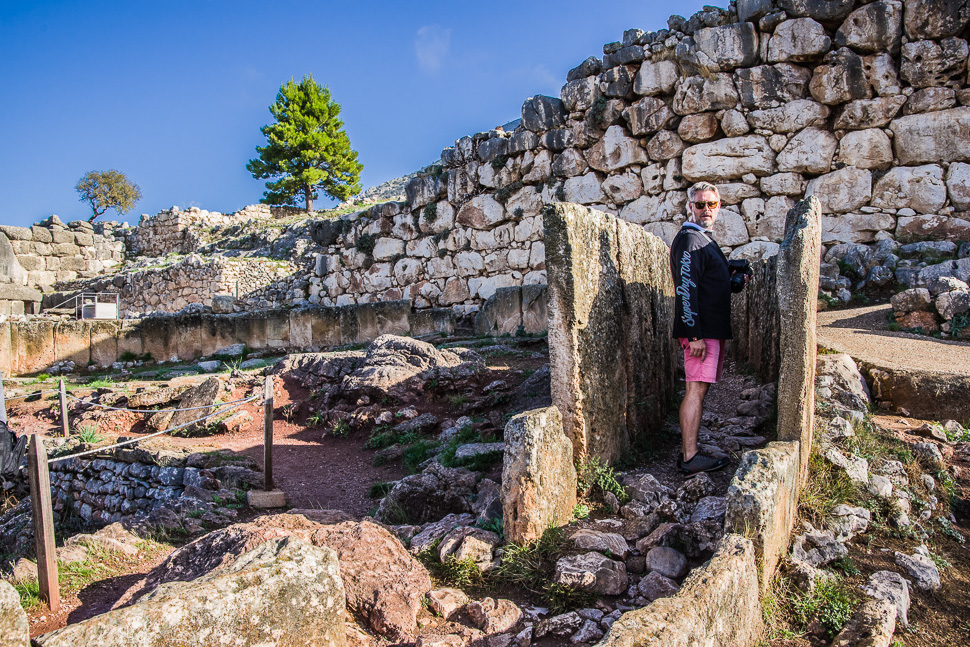 |
| Grave Circle A – a 16th-century BC royal cemetery |
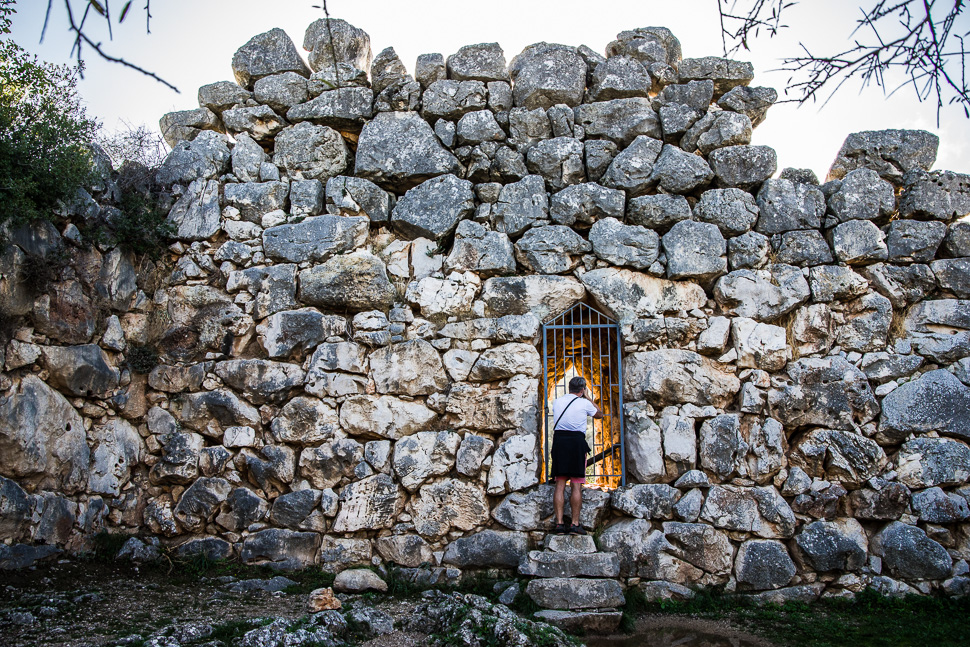 |
| Walls a couple of metres thick |
This corbelled staircase leads down 99 steps to a cistern carved out of the rock 15 m below the surface.
The descent begins inside the citadel, cuts through the fortification wall and continuous underground outside the citadel. The water from a nearby spring reached the cistern through an underground aqueduct. The construction of this cistern is one of the most spectacular achievements of Mycenaean building art.
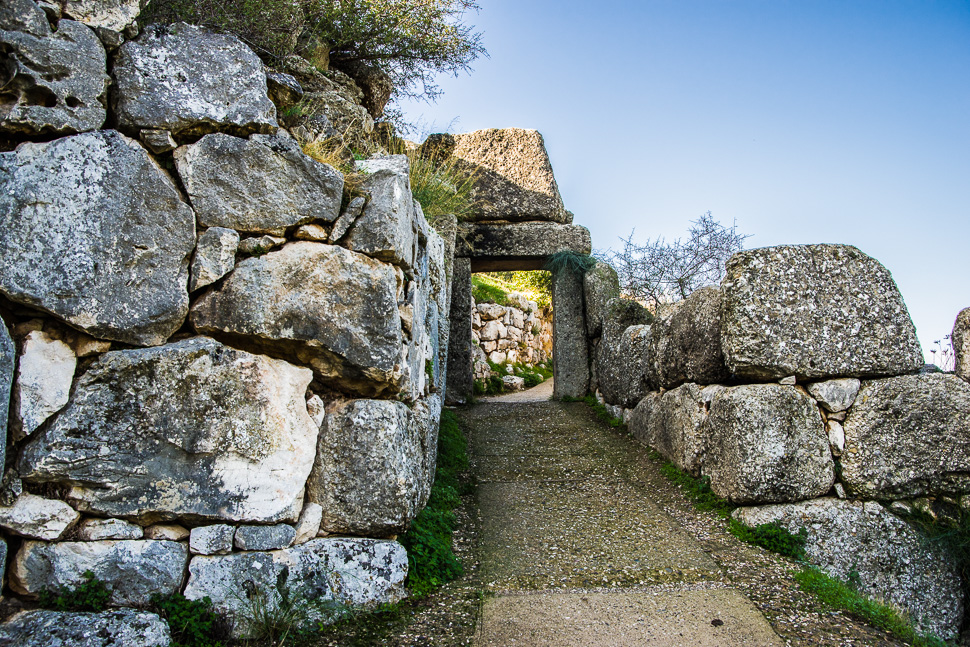 |
| Northern Gate |
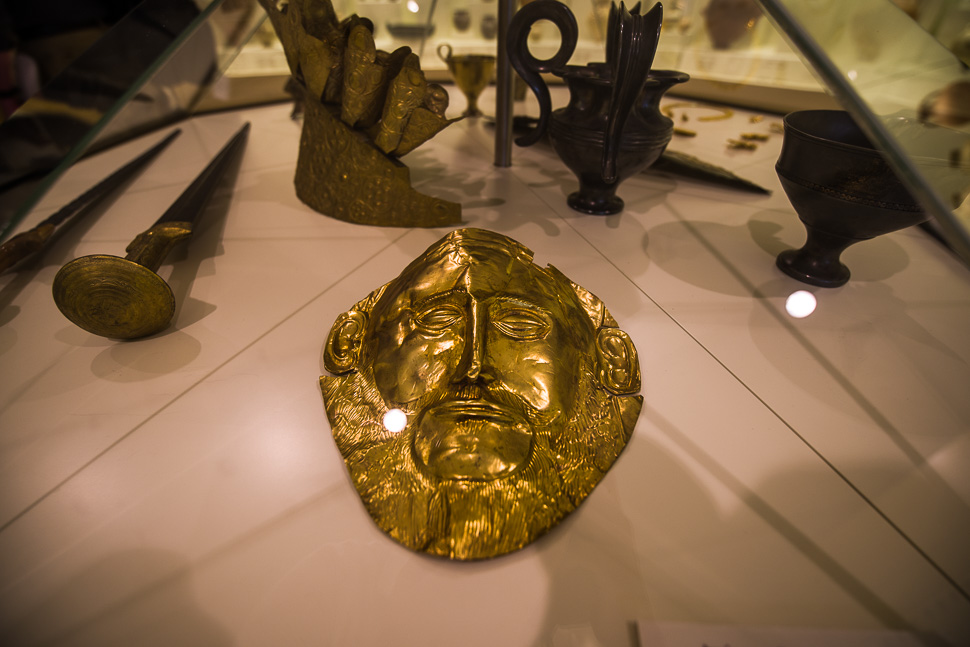 |
| Mask from 1600 BC found by Schliemann |
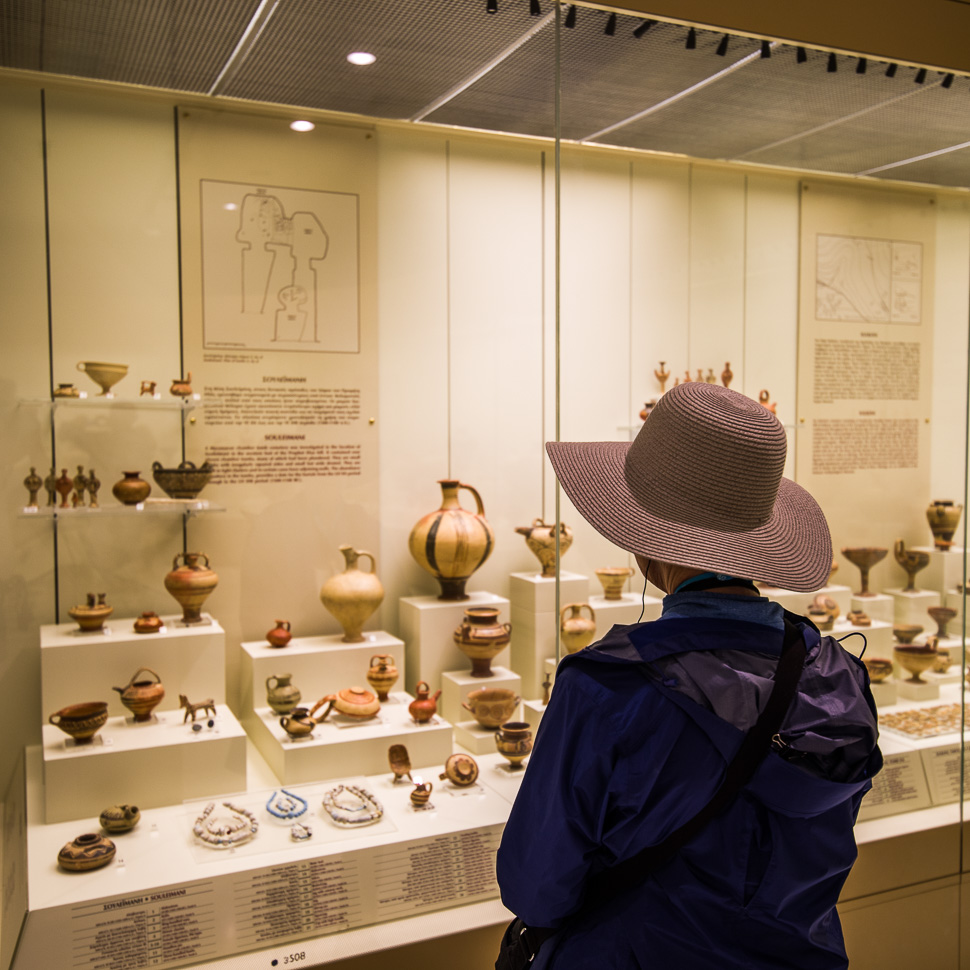 |
| Interesting artefacts @ the museum |
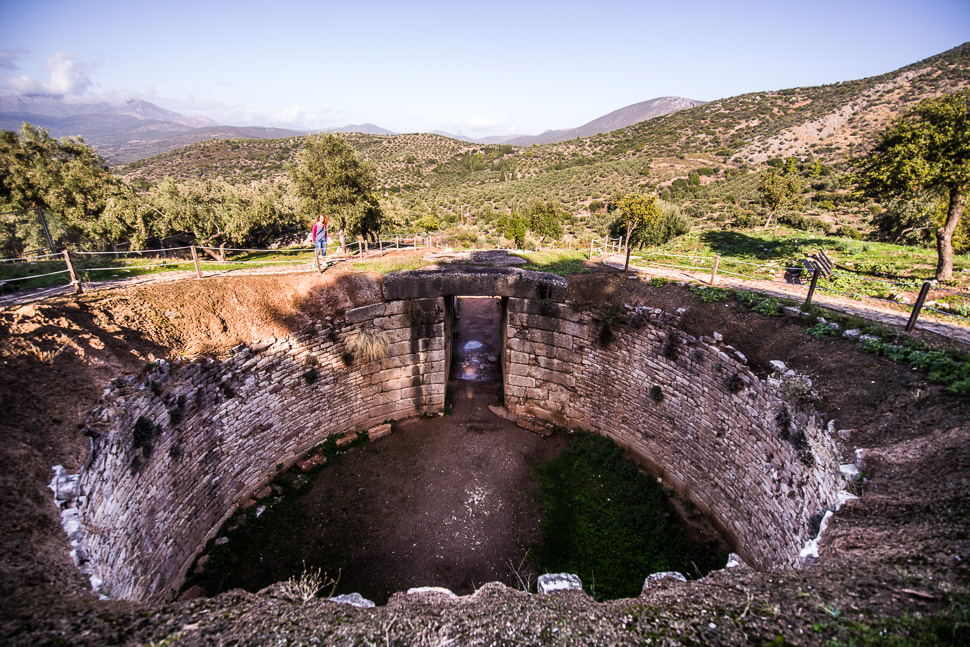 |
| Tholos with collapsed dome |
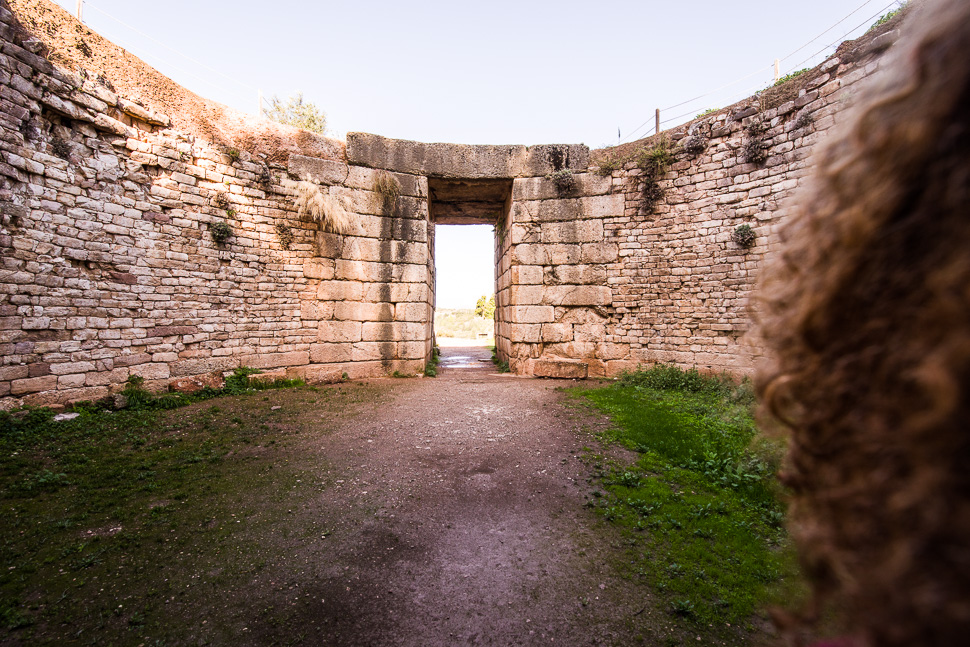 |
| Impressive entrance to the tholos |
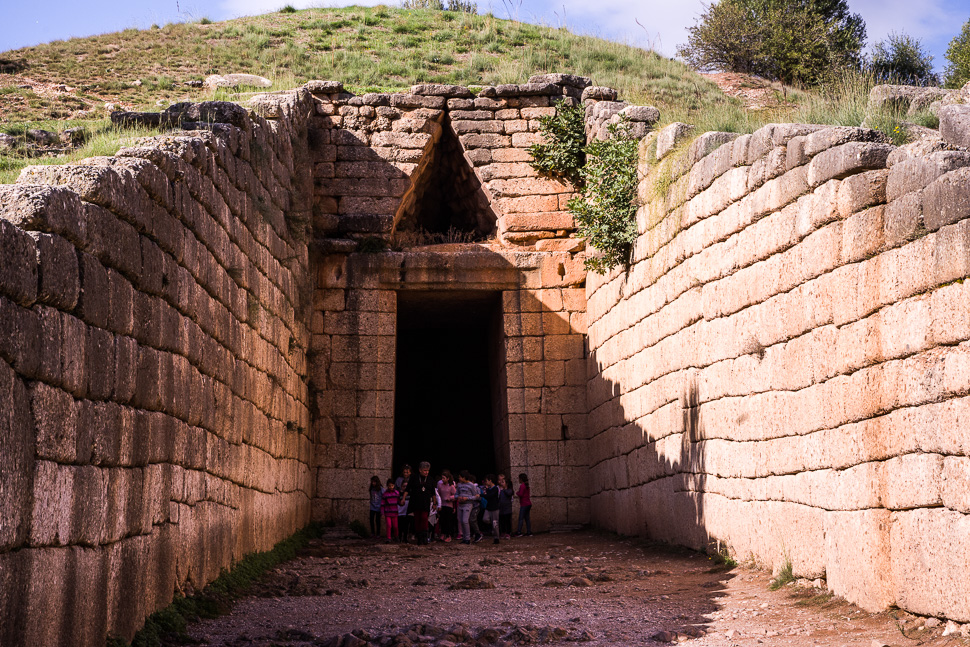 |
| Treasury of Atreus |
This tholos or beehive tomb was built between 1350 and 1250 BC and was once richly decorated. The green columns from each side of the entrance are now in the Museum of Archaeology in Athens. Like all the tholos tombs of this area, they had been robbed early and there is no information of the burials it once housed.
 |
| Parking @ Mykene |
 |
| Flower of the Day |

